I'm not sure how detailed I'm gonna keep this thread, but I couldn't resist sharing.
Meet Apache. He is an 18 day old goshawk from Barry's project. I am raising him with full-food association (hand feeding). Here are some pics...
This is the large soft sided dog kennel I'm using as an imprint tank. It is lined with a cheap shower curtain that I can change regularly.
Apache in his nest bowl. (I'm going to get a bigger nest bowl for him, he can already get out of this one)
Exploring the house...
Taking a rest on the dog bed...
Exposing him to horses, just in case I ever hunt from horseback
Last night he crawled out of the nestbowl and explored for a little bit. He went back to the nestbowl on his own where I rewarded him.
At this point I am handing feeding him and introducing the CR (clicker). I only feed him when he is sitting calmly on his haunches. I hand feed him until he loses interest and then I leave the rest of the food with him.


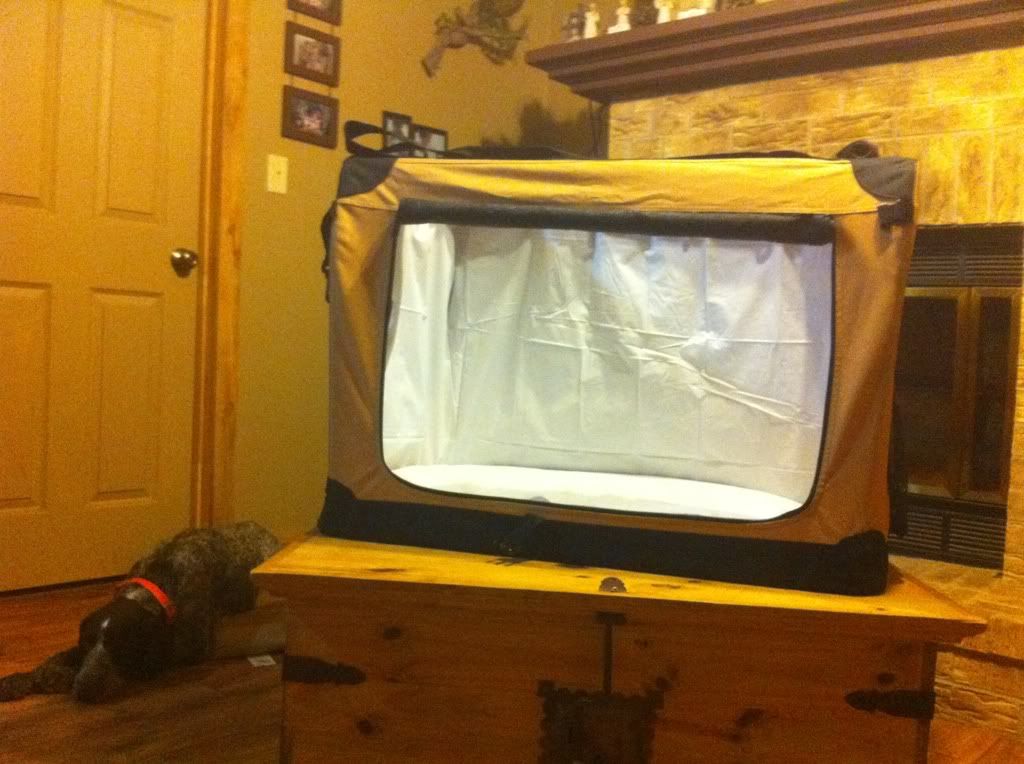
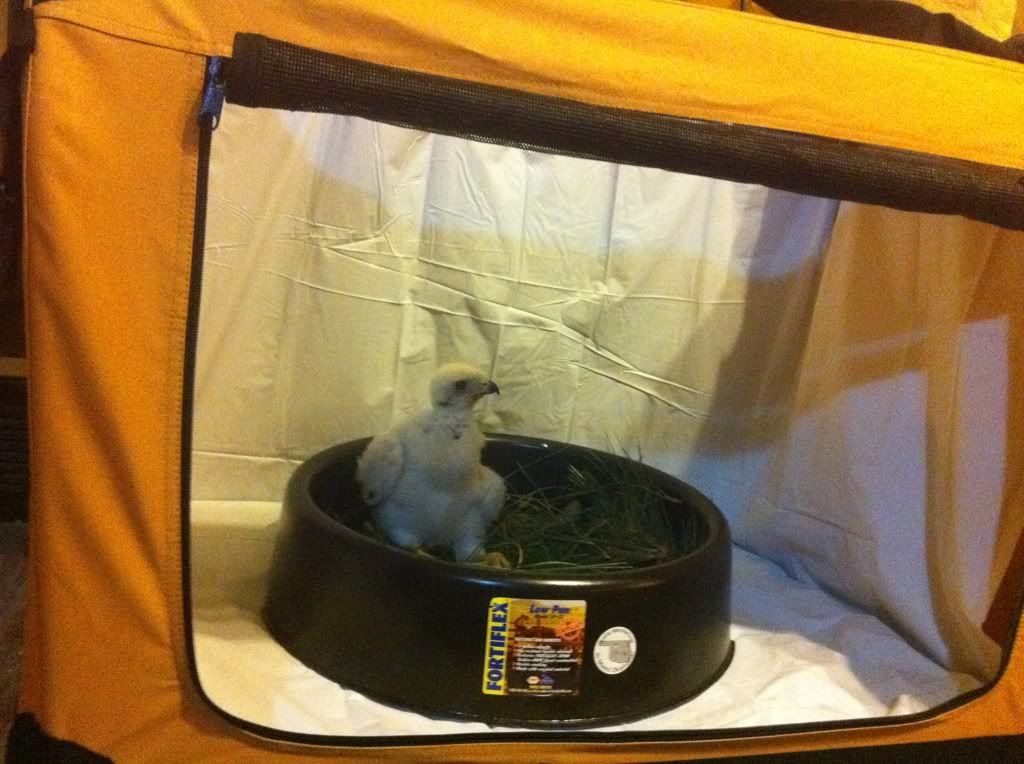
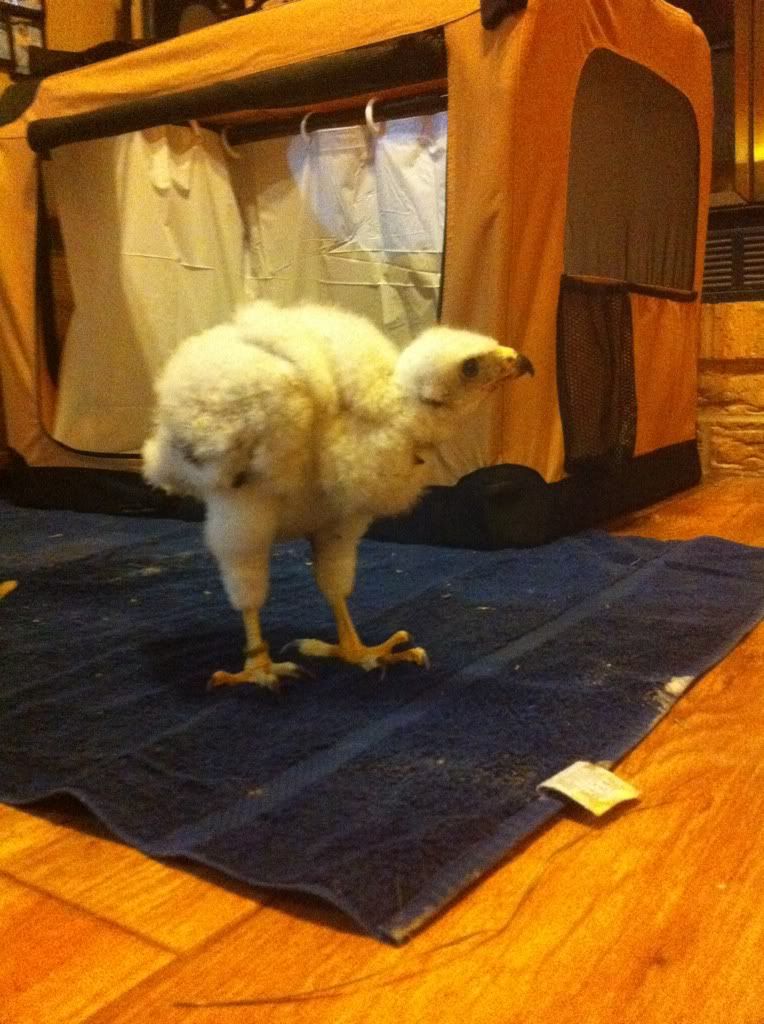
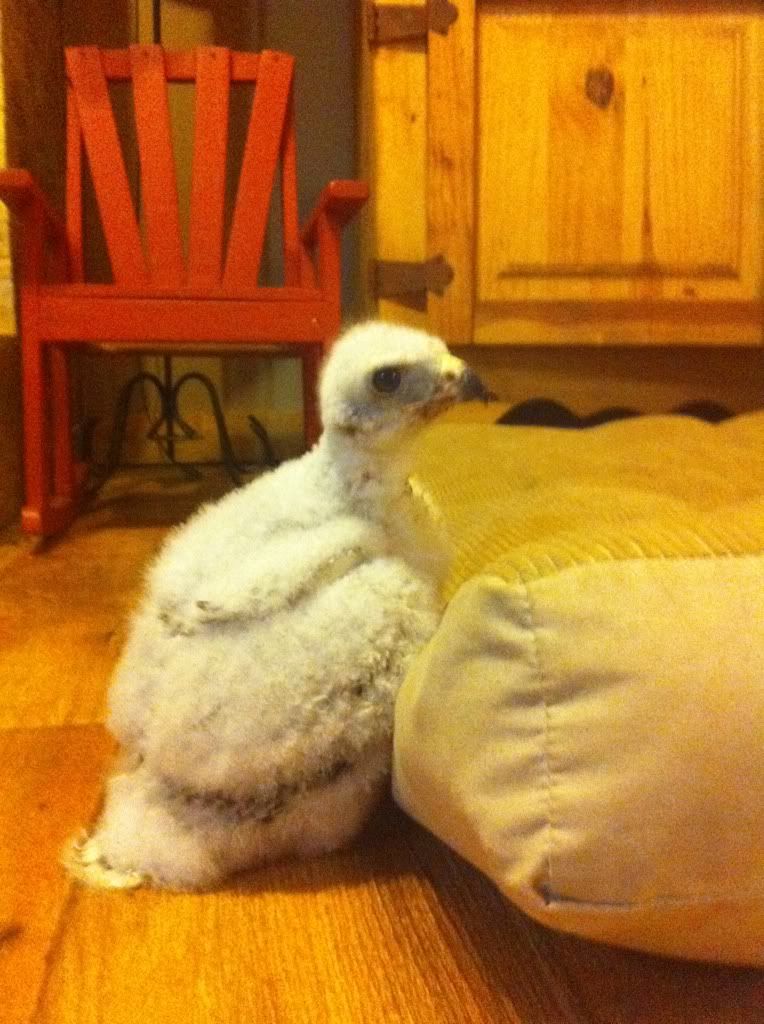

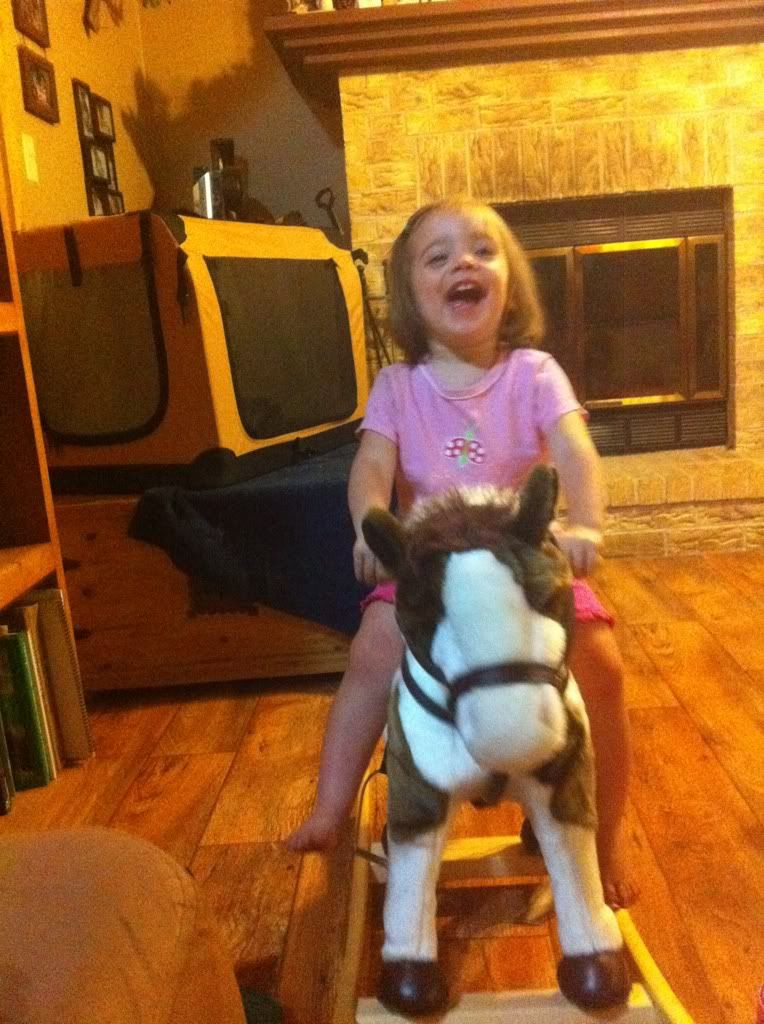

 Reply With Quote
Reply With Quote













